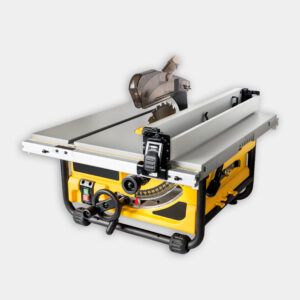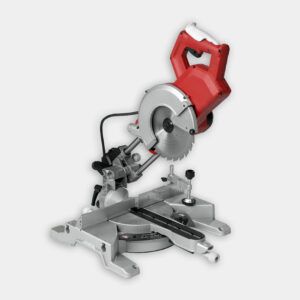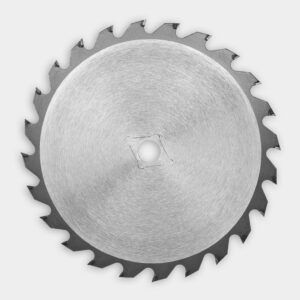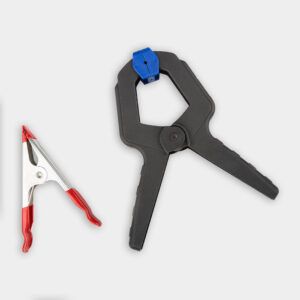We may be compensated if you purchase through links on our website. Our team is committed to delivering honest, objective, and independent reviews on home products and services.
Mastering the art of cutting wood joints can elevate your craftsmanship and open up a world of new project possibilities. In this guide, we’ll explore three fundamental wood joints: the rabbet-butt joint, the rabbet-dado joint, and the box joint. This Old House expert Tom Silva explains these techniques and showcases how to create strong, precise joints using common woodworking tools in the above video.
Wood Joint Basics
Wood joints connect two or more pieces of wood to form a larger structure. They’re key in woodworking, providing strength and structure to everything from simple boxes to intricate furniture. They don’t just make your pieces stronger—they also add to the design. The type of joint you choose depends on the project, the type of wood you’re using, and how the joint will be used.
Common Types of Wood Joints
There are many types of wood joints, each with unique strengths and applications. Some common types include:
- Butt joints: Simple and easy to create; used for basic assemblies.
- Dovetail joints: Valued for their mechanical strength and decorative appearance; often used in high-quality furniture.
- Miter joints: Often used for creating angles; perfect for picture frames.
- Mortise and tenon joints: Known for exceptional strength; ideal for furniture making.
- Lap joints: Provide strength and simplicity; used in support structures.
- Tongue and groove joints: Create a seamless fit; often used in flooring and paneling.
This guide focuses on rabbet-butt, rabbet-dado, and box joints. They’re versatile, and you can use them in many projects.
Tools and Materials You’ll need
To get clean and accurate cuts, gather the right tools and materials before you start:
- 1/4-inch plywood
- Clamps
- Lumber
- Miter saw
- Safety glasses
- Screwdriver or drill
- Table saw with dado blade
- Wood glue
- Wood screws
Cutting a Rabbet-Butt Wood Joint
The rabbet-butt joint is a basic but effective way to join two wood pieces. Here are the steps:
- Set the dado blade height slightly above the board thickness.
- Hold the board on its long side and eyeball the desired thickness of the rabbet cut. Slide the rip fence against the board and lock it down when the gap between the rip fence and the blade is at your desired thickness.
- With the board still standing upright, run it through the table saw.
- Repeat this process on the other side of the board, and then again on the board that will be parallel to this one on the completed box.
- Switch the dado blade to a table saw blade and make a cut on all four boards the thickness of the bottom of the box to receive the bottom of the box.
- Cover all the joints with wood glue and assemble the first three sides.
- Slide the bottom into the dados, then add the fourth side.
- Screw all the sides together with wood screws.
Despite its simplicity, Silva notes that the additional reinforcement from the screws improves the joint’s strength.
Creating a Rabbet-Dado Wood Joint
The rabbet-dado joint offers increased strength and stability compared to the rabbet-butt joint, often eliminating the need for screws. Follow these steps:
- Set the dado blade height to roughly a quarter of an inch. You can use the 1/4-inch plywood as a guide.
- Stand the board tall and then adjust the rip fence so that the blade falls perfectly center with the board.
- Set the board flat and run the dado cut. Repeat this process on the other side of the board, then again on the board that will be parallel to this one on the completed box.
- To make the rabbet cuts, take a sacrificial piece of wood the same dimensions as the box lumber and hold it against the rip fence. Lay the board flat against the sacrificial piece and run it through the blade.
- Repeat this process on the other side of the board, then again on the board that will be parallel to this one on the completed box.
- Switch the dado blade to a table saw blade and make a cut on all four boards that’s about a quarter inch thick to receive the bottom of the box.
- Cover all the joints with wood glue, assemble the box with the bottom, and clamp it together until the glue dries.
This joint has a large glue surface area, so it’s very strong once the glue dries.
Mastering the Box Joint
The box joint, also known as a finger joint, combines strength and visual appeal. It’s also more challenging to create. This is Silva’s process:
- Attach a sacrificial piece of wood to the cross-cutting fence, then hold a second sacrificial piece of wood against that piece.
- Set the height of the dado blade to the thickness of the boards being cut.
- Run the sacrificial piece of wood through the blade.
- Cut a filler piece of wood to fit perfectly in the hole made by the previous cut and glue it perpendicular to the hole. Be certain that the board still lays perfectly straight on the table saw.
- Slide the fence up against the blade and adjust it on the table saw so that there is a gap between the blade and the filler piece. This gap should be the exact same width as the filler piece.
- Clamp the guide into position on the fence.
- Stand the board up against the jig and run it through the table saw.
- Line up the newly cut hole over the filler piece and run the board through the saw again.
- Pick up the board, place the most recently cut hole on top of the filler piece, and run the board through the saw. Repeat this process all the way across the board.
- To move on to the next board, hold the previously cut board over the filler piece and line up the next board against it. Run that board through the table saw.
- Flip each board over and repeat the process on the other side of all four boards.
- Switch the dado blade back to a table saw blade and make cuts 1/4-inch cuts on the bottom of all four sides to receive the bottom piece.
- Cover all the joints with wood glue and assemble the box and the bottom.
Silva emphasizes the importance of precise cuts and proper glue application for a strong box joint. Take your time and be patient for the best results.
Tips for Successful Wood Joints
Here are a few extra tips to help you get the best results when cutting wood joints:
- Let the glue fully dry before handling or finishing.
- Apply glue evenly across all surfaces for the strongest bond.
- Hold the workpiece firmly in place while cutting to prevent movement.
- Measure and mark your cuts carefully to avoid mistakes.
- Practice on scrap wood before trying new techniques.
- Keep your tools sharp for clean, precise cuts.
Troubleshooting Common Issues
Even experienced woodworkers run into problems sometimes. Here are some common issues and how to fix them:
- Incorrect measurements: Double-check your measurements before cutting, and test fit the pieces before gluing.
- Misaligned cuts: Make sure your saw and fence are properly aligned to avoid crooked cuts.
- Not enough glue: Apply enough glue to cover the entire surface for a strong bond.
- Loose joints: Adjust the cuts or use clamps to keep everything tight while the glue dries.





